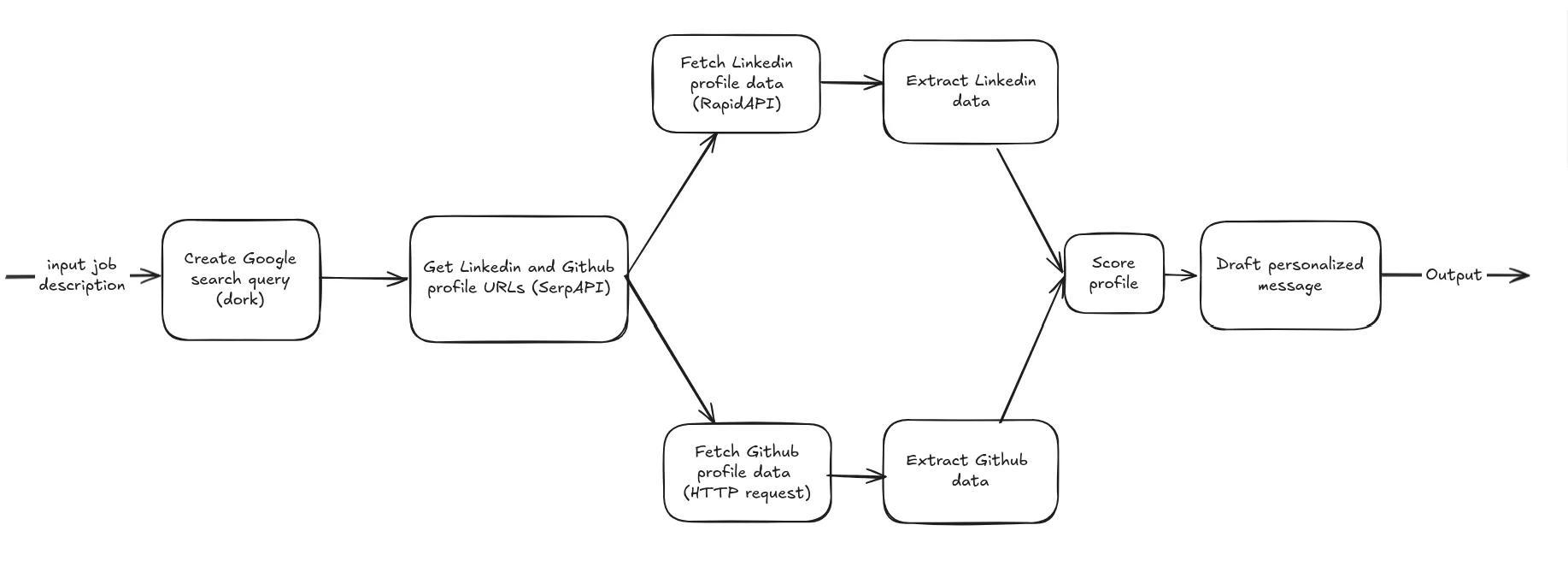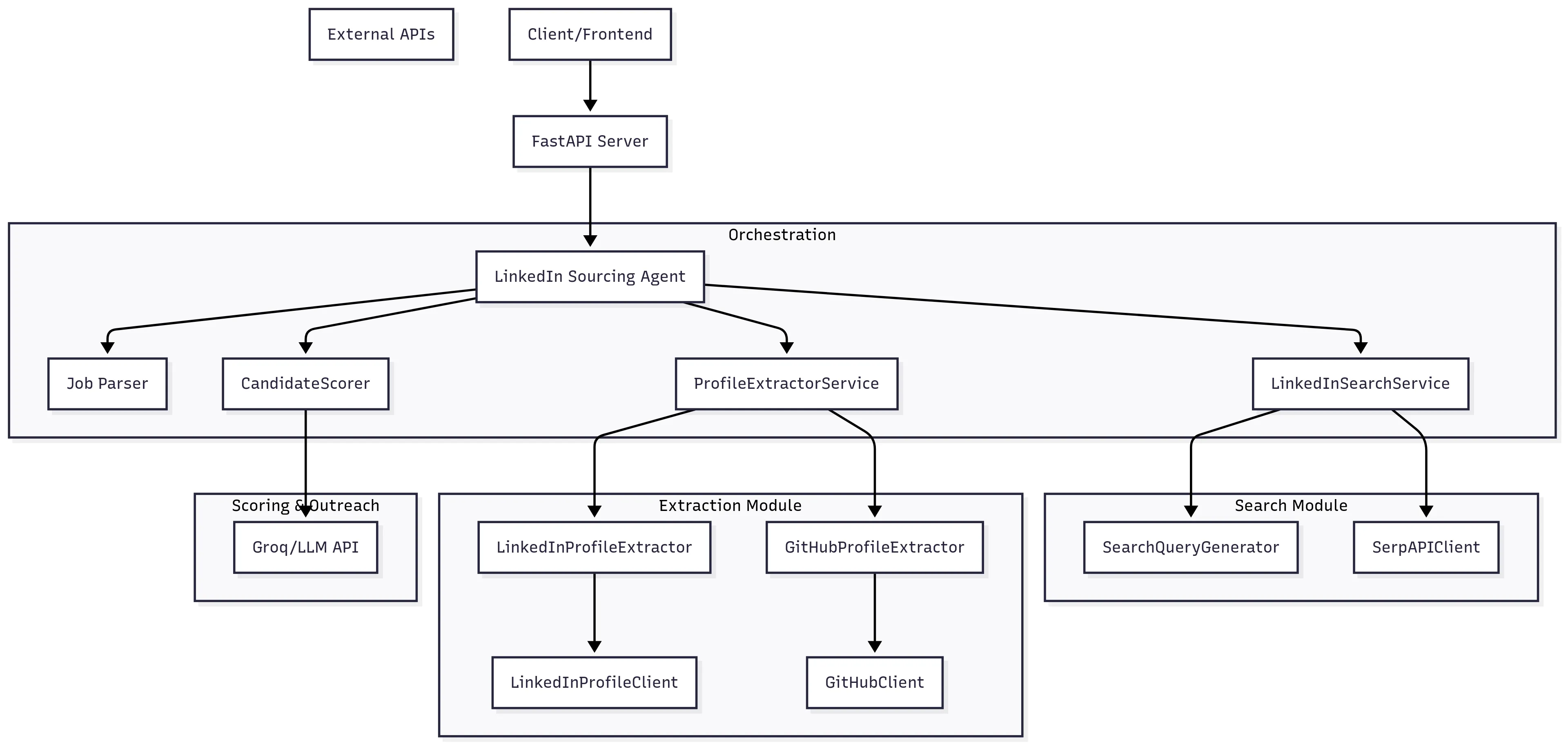The Challenge: Round Two with LinkedIn
Read the full version at https://blog.pranshu-raj.me/posts/linkedin-scraping-full.
Recruiting is broken. Finding the right candidates is like searching for needles in a haystack, and when you do find them, your generic LinkedIn message gets lost with 50 others.
Two years ago, I tried building a LinkedIn scraper. LinkedIn’s anti-scraping measures crushed that dream within days. This hackathon was my chance for round two.
What I Built
Instead of another keyword-matching tool, I built something that thinks like a recruiter:
Job Description → Smart Search → Profile Scraping → AI Scoring → Personalized Messages
Core components:
- Multi-source discovery: LinkedIn + GitHub profiles
- 6-factor scoring algorithm that goes beyond keywords
- AI-powered outreach via Llama/Groq
- Async processing for multiple jobs
The Technical Stack
FastAPI backend with async processing throughout. Used RapidAPI for LinkedIn data (because scraping LinkedIn directly is still a nightmare), SerpAPI for search, and Groq for AI messaging.
 Data flow diagram
Data flow diagram
 App architecture
App architecture
Smart Scoring Algorithm
| Factor | Weight | What It Measures |
|---|---|---|
| Education | 20% | Elite schools get higher scores |
| Career Trajectory | 20% | Clear progression vs. lateral moves |
| Company Relevance | 15% | Relevant industry experience |
| Skill Match | 25% | How well skills align with requirements |
| Location | 10% | Geographic fit |
| Tenure | 10% | Stability vs. job hopping |
The LLM understands context - an engineer who went startup → Google → senior role gets higher trajectory scores than someone stuck at the same level.
Personalized Outreach
Generic LinkedIn messages get ignored. My solution creates messages that reference specific achievements and feel personal, not templated.
Example: “Hi John, I noticed your transformer optimization work at Google Research, particularly your ICML paper on efficient attention mechanisms…”
What Actually Worked
Smart Caching: Saves API costs by checking if we’ve seen profiles before
Async Processing: Process 10 profiles in 5-6 seconds instead of 30 seconds sequentially
The Scoring Algorithm: LLMs recognize career patterns that regex never could
The Real Challenges
LinkedIn’s Anti-Scraping: Learned my lesson from 2022. Went straight to paid APIs instead of fighting their defenses.
LLM Consistency: Groq returned proper JSON maybe 70% of the time. Had to build fallback parsing with regex.
Data Validation: Biggest time sink. Started doing TDD-style development midway through.
Why This Matters
This isn’t just a hackathon project. It could save recruiters hours of manual work, increase response rates through personalization, and find qualified candidates that keyword searches miss.
The expensive API solution turned out cheaper when you factor in development time. Sometimes paying for reliability beats fighting the system.
Try it yourself: GitHub Repository